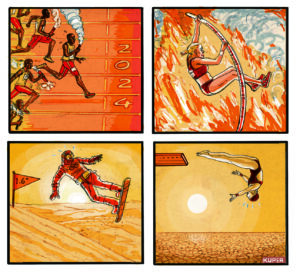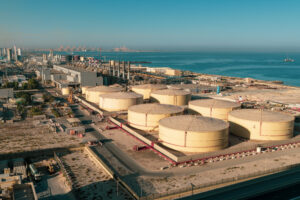Flooding at a Peak in Paris, Threatens Downstream Towns
As France suffers its heaviest rains in 50 years, the inhabitants and tourists of the capital cope with an overflow of the Seine. The Louvre Museum has closed its bottom floor in response to the threat.PARIS—Floodwaters reached a peak in Paris on Monday and were threatening towns downstream along the rain-engorged Seine River as it winds through Normandy toward the English Channel.
Rivers swollen by France’s heaviest rains in 50 years have engulfed romantic quays in Paris, swallowed up gardens and roads, halted riverboat cruises — and raised concerns about climate change.
The national weather service Meteo France said Monday that January has seen nearly double normal rainfall nationwide, and that the rains in the past two months are the highest measured for the period in 50 years.
“I’m amazed. I’ve come to Paris since 1965, most years, and I’ve never seen the Seine as high,” said Terry Friberg, visiting from Boston. “I love Paris with all my heart but I’m very worried about the level of the river.”
Flood monitoring agency Vigicrues said the water levels in Paris hit a maximum height of 5.84 meters (19 feet, 2 inches) on the Austerlitz scale early Monday.
That’s below initial fears last week, and well below record levels of 8.62 meters in 1910, but still several meters above normal levels of about 1.5 meters on the Austerlitz scale.
And the waters are expected to stay unusually high for days or weeks.
That’s bad news for tourists hoping to cruise past Paris sites on the famed “bateaux mouches” riverboats, or visit the bottom floor of the Louvre Museum, closed since last week as a precaution. Riverside train stations along the line that serves Versailles are also closed, and will remain that way for several more days.
Water laps the underside of historic bridges, and treetops and lampposts poke out of the brown, swirling Seine.
South African tourist Michael Jelatis, visiting Notre Dame Cathedral on an island in central Paris, was among many people linking the floods to global warming, blamed for increasing instances of extreme weather.
“Around the world we’re all aware that things like this, unusual weather, are happening. I mean back home we are in a serious drought at the moment as well,” he told The Associated Press.
Overall, Paris is better prepared than when it was last hit by heavy flooding in 2016, and Parisians have largely taken disruptions in stride this time.
Other towns on the surging Seine have seen it much worse.
The floods have caused damage in 242 towns along the river and tributaries already and more warnings are in place as the high waters move downstream.
In Lagny-sur-Marne south of Paris, Serge Pinon now has to walk on a makeshift footbridge to reach his home and its flooded surroundings.
His basement is submerged in water, as are the plants he was trying to grow in a backyard greenhouse tent. He lost a freezer, a refrigerator, a washing machine and dryer to flood waters.
“We’re up to the maximum, maximum and now we’re just waiting for it to go down,” he said. “This year the flood has risen more rapidly than usual. Here it usually rises in a regular fashion and we have the time to see it coming we can save things. But this time it rose too quickly.”
Elsewhere in the town, street signs stick out of the water and a lonely boat floats in the Marne River, once accessible from the riverbank but now unreachable on foot.
Mayor Jean-Paul Michel said that residents are used to seasonal floods, but this one is exceptionally long-lasting, now in its third week. “So it goes on and on, and we think it’s going to carry on for (another) long week before the flood starts subsiding,” he said.
___
Angela Charlton contributed.
Your support matters…Independent journalism is under threat and overshadowed by heavily funded mainstream media.
You can help level the playing field. Become a member.
Your tax-deductible contribution keeps us digging beneath the headlines to give you thought-provoking, investigative reporting and analysis that unearths what's really happening- without compromise.
Give today to support our courageous, independent journalists.






You need to be a supporter to comment.
There are currently no responses to this article.
Be the first to respond.